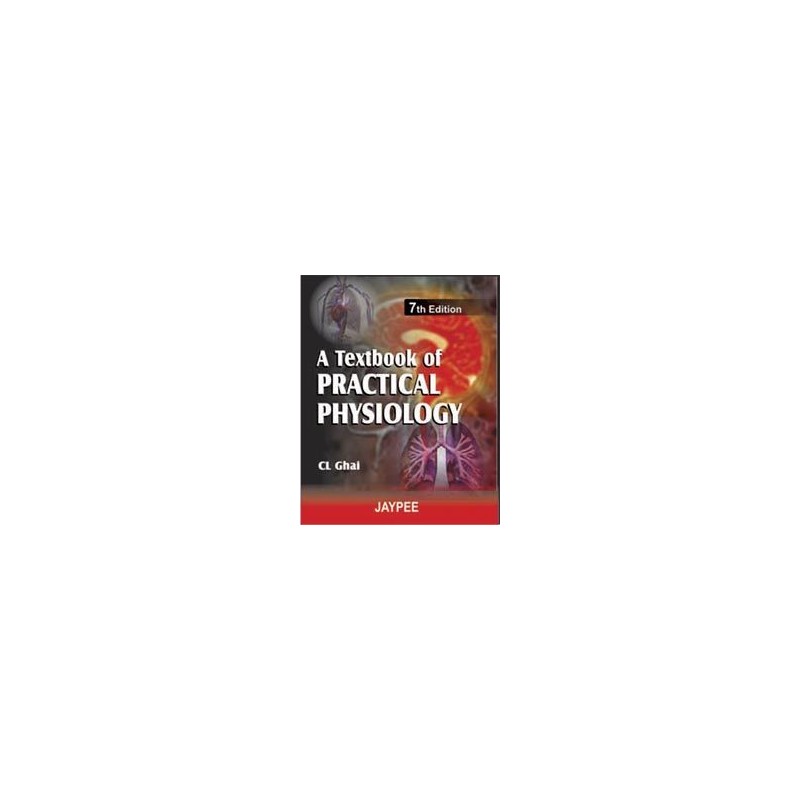- Reduced price

Order to parcel locker

easy pay


 Delivery policy
Delivery policy
Choose Paczkomat Inpost, Orlen Paczka, DHL, DPD or Poczta Polska. Click for more details
 Security policy
Security policy
Pay with a quick bank transfer, payment card or cash on delivery. Click for more details
 Return policy
Return policy
If you are a consumer, you can return the goods within 14 days. Click for more details
General Introduction.Section One:: Hematology
1-1 The Compound Microscope
1-2 The Study of Common Objects
1-3 Collection of Blood Samples
1-4 Hemocytometry (Cell Counting) The Diluting Pipettes
1-5 Hemocytometry (Cell Counting) The Counting Chamber
1-6 Examination of Fresh Blood:: A. Drop Preparation
B. Preparing a Peripheral Blood Film
1-7 Estimation of Hemoglobin
1-8 The Red Cell Count
1-9 Determination of Hematocrit (Hct) (Packed Cell Volume; PCV)
1-10 Normal Blood Standards (Absolute Corpuscular Values and Indices)
1-11 The Total Leukocyte Count (TLC) White Cell Count (WCC)
1-12 Staining a Peripheral Blood Film The Differential Leukocyte Count (DLC)
1-13 The Cooke-Arneth Count (Arneth Count)
1-14 Absolute Eosinophil Count
1-15 Study of Morphology of Red Blood Cells
1-16 The Reticulocyte Count
1-17 Erythrocyte Sedimentation Rate (ESR)
1-18 Blood Grouping (Syn:: Blood Typing)
1-19 Tests for Hemostasis (Bleeding time; Coagulation time; Platelet count; and other tests)
1-20 Osmotic Fragility of Red Blood Cells (Syn:: Osmotic Resistance of Red Blood Corpuscles)
1-21 Specific Gravity of Blood and Plasma (Copper Sulphate Falling Drop Method of Philips and van Slyke)
1-22 Determination of Viscosity of Blood
Section Two:: Human Experiments
Unit I:: Respiratory System
2-1 Stethography:: Recording of Normal and Modified Movements of Respiration
2-2 Determination of Breath Holding Time (BHT)
2-3 Spirometry (Determination of Vital Capacity, Peak Expiratory Flow Rate, and Lung Volumes and Capacities)
2-4 Pulmonary Function Tests (PFTs)
2-5 Cardiopulmonary Resuscitation (CPR) Cardiopulmonary-Cerebral Resuscitation (CPCR).Unit II:: Cardiovascular System
2-6 Recording of Systemic Arterial Blood Pressure
2-7 Effect of Posture, Gravity and Muscular Exercise on Blood Pressure and Heart Rate
2-8 Cardiac Efficiency Tests (Exercise Tolerance Tests)
2-9 Demonstration of Carotid Sinus Reflex
2-10 Demonstration of Venous Blood Flow
2-11 Recording of Venous Pressure
2-12 Demonstration of Triple Response
2-13 Electrocardiography (ECG)
2-14 Experiments on Student Physiography
Unit III:: Special Sensations
2-15 Perimetry (Charting the Field of Vision)
2-16 Mechanical Stimulation of the Eye
2-17 Physiological Blind Spot.2-18 Near Point and Near Response.2-19 Sanson Images
2-20 Demonstration of Stereoscopic Vision
2-21 Dominance of the Eye
2-22 Subjective Visual Sensations
2-23 Visual Acuity
2-24 Color Vision
2-25 Tuning-Fork Tests of Hearing
2-26 Localization of Sounds
2-27 Masking of Sounds
2-28 Sensation of Taste
2-29 Sensation of Smell
Unit IV:: Nervous System, Nerve and Muscle
2-30 Electroencephalography (EEG)
2-31 Electroneurodiagnostic Tests, Nerve Conduction Studies, Motor Nerve Conduction in Median Nerve
2-32 Electroneurodiagnostic Tests Sensory Nerve Conduction in Ulnar Nerve
2-33 Electroneurodiagnostic Tests Electromyography (EMG)
2-34 Electroneurodiagnostic Tests Evoked Potentials Brainstem Auditory, Visual, Somatosensory and Motor Evoked Potentials
2-35 Electroneurodiagnostic Tests
The Hoffmanns Reflex (H-Reflex )
2-36 Study of Human Fatigue Mossos Ergograph and Hand-Grip Dynamometer
2-37 Autonomic Nervous System (ANS) Tests (Autonomic Function Tests; AFTs)
Unit V:: Reproductive System
2-38 Semen Analysis
2-39 Pregnancy Diagnostic Tests
2-40 Birth Control Methods
Section Three:: Clinical Examination
3-1 Outline for History Taking and General Physical Examination
3-2 Clinical Examination of the Respiratory System
3-3 Clinical Examination of the Cardiovascular System
3-4 Clinical Examination of the Gastrointestinal Tract (GIT) and Abdomen
3-5 Clinical Examination of the Nervous System
Section Four:: Experimental Physiology (Amphibian and Mammalian Experiments)
4-1 Study of Apparatus
4-2 Dissection of Gastrocnemius Muscle-Sciatic Nerve Preparation
4-3 Simple Muscle Twitch (Effect of a Single Stimulus)
4-4 Effect of Changing the Strength of Stimulus
4-5 Effect of Temperature on Muscle Contraction
4-6 Velocity of Nerve Impulse
4-7 Effect of Two Successive Stimuli
4-8 Genesis of Tetanus (Effect of Many Successive Stimuli)
4-9 Phenomenon of Fatigue and its Site (Effect of Continued Stimulation)
4-10 Effect of Load and Length on Muscle Contraction (Free- and After-Loading)
4-11 Exposure of Frogs Heart and Normal Cardiogram
4-12 Effect of Temperature on Frogs Heart
4-13 Effect of Adrenalin, Acetylcholine and Atropine on Heart
4-14 Effect of Stimulation of Vagosympathetic Trunk and Crescent; Vagal Escape; Effect of Nicotine and Atropine
4-15 Properties of Cardiac Muscle (Stannius Ligatures)
4-16 Perfusion of Isolated Heart of Frog
4-17 Study of Reflexes in Spinal and Decerebrate Frogs
4-18 Experiments on Anesthetized Dog
Section Five:: Charts
5-1 Jugular Venous Pulse Tracing
5-2 Cardiac Cycle
5-3 Oxygen Dissociation Curve
5-4 Strength-duration Curve
5-5 Action Potential in a Large, Myelinated Nerve Fiber
5-6 Action Potentials in Cardiac Muscle Fibers
5-7 Dye Dilution Curve
5-8 Oral Glucose Tolerance Test (OGTT)
Section Six:: Calculations
Calculations
Appendix
Index
Data sheet
Reference: 98820
Author: Brett Gooden
